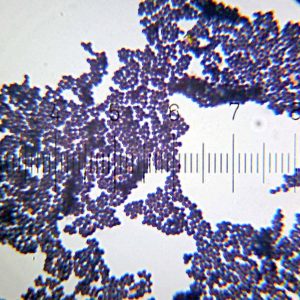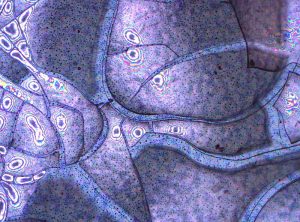At some point in your life you may have gotten only a couple hours of sleep or even pulled an all-nighter for an exam or a project. A quick solution to sleep deprivation is often coffee, energy drinks, soft drinks, or tea, to name a few. All of these drinks have a common ingredient, caffeine (1).
Caffeine is a molecule that stimulates activity in the central nervous system (3). Caffeine inhibits binding of adenosine, which is a type of neurotransmitter that is essential in promoting sleep in the central nervous system, to cell receptors (4).

There are evidence to support that ingesting caffeine is an effective way in compensating for sleep deprivation. The researchers at the University of Sfax in Tunisia concluded from a study that ingesting caffeine can improve physical and cognitive performances, and counteract 36 hours of sleep deprivation (5). Souissi and colleagues conducted the study using 13 healthy male students with similar height, age, and weight (5).
Some participants were given 8.5 hours of rest and/or sleep time, while the other participants were sleep deprived for 36 hours by keeping televisions on throughout the sleeping hours (5). Then the participants from each group either ingested a placebo, which is essentially a sugar pill, or a caffeine pill (5). The participants’ physical and cognitive performances were measured by squat jump performances and the Wingate anaerobic test using a cycle ergometer (5). The Wingate test is generally used to measure the energy output of a person’s anaerobic cycling performance (2). The participants’ reaction time were determined from both squat jump performance and Wingate anaerobic test (5). By comparing the reaction times of both groups, the researchers concluded that ingesting caffeine improved cognitive and physical performances more prominently for the group that was deprived of sleep for 36 hours(5). Hence, caffeine has its benefits in helping us function on days when we are sleep deprived.
Although caffeine has its benefits on improving physical and cognitive performances over a short time period, caffeine should be consumed in moderation. Higher doses of caffeine can result in numerous side effects which include insomnia, tremor, headaches, and cardiovascular and respiratory failures (3). Perhaps further studies should be conducted on the relative effects of caffeine on people that differ in age, height, weight, health, and other factors compared to the participants in Souissi and colleagues’ study.
–Gloria Kwong
References:
- Bender, D. A. A Dictionary of Food and Nutrition: Caffeine (4th edition). Oxford University Press, 2014. http://www.oxfordreference.com/view/10.1093/acref/9780191752391.001.0001/acref-9780191752391-e-960?rskey=reGySA&result=1 (accessed November 5, 2016).
- Beneke, R.; Pollmann, C.; Bleif, I.; Leithauser, R.; Hutler, M. How anaerobic is the Wingate Anaerobic Test for humans. Eur. J. App. Physiology, 2002, 87, 388-392. http://link.springer.com.ezproxy.library.ubc.ca/article/10.1007%2Fs00421-002-0622-4 (accessed November 5, 2016).
- Colman, A. M. A Dictionary of Psychology: Caffeine (4th edition). Oxford University Press, http://www.oxfordreference.com.ezproxy.library.ubc.ca/view/10.1093/acref/9780199657681.001.0001/acref-9780199657681-e-1217 (accessed November 5, 2016).
- Roehrs, T.; Roth, T. Caffeine: Sleep and daytime sleepiness. Sleep Medicine Reviews, 2008, 12, 153-162. http://www.sciencedirect.com.ezproxy.library.ubc.ca/science/article/pii/S1087079207000937?np=y (accessed November 5, 2016)
- Souissi, M.; Chtourou, H.; Abedelmalek, S.; Ghozlane, I. B.; Sahnoun, Z. The effects of caffeine ingestion on the reaction time and short-term maximal performance after 36 h of sleep deprivation. Physiology and Behaviour, 2014, 131, 1-6. http://www.sciencedirect.com/science/article/pii/S0031938414002030 (accessed November 3, 2016)




